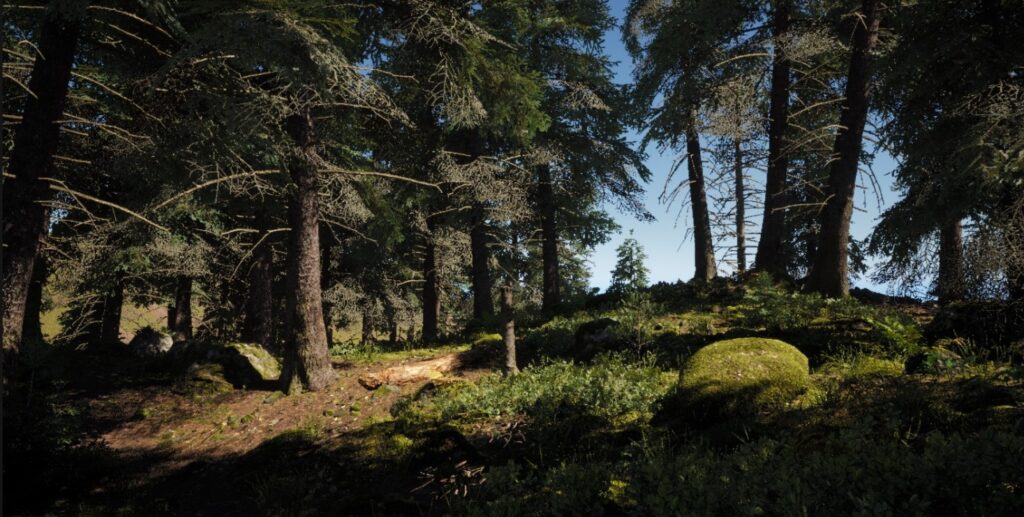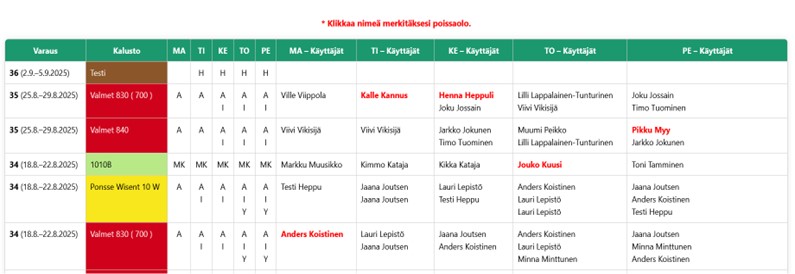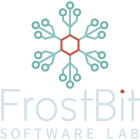Let’s take a look at one of our forestry projects: The objective of the project ‘Digital Learning Environment for Forestry – developement’ is to update and develop REDU’s forestry learning environments using new technology, thereby strengthening students’ skill development and responding to the goals of the green transition and the future demand for skilled professionals

About the project
The project consists of an investment section and a development section, which strengthens RDI (Research, Development, and Innovation) collaboration between educational institutions and working life in the development of forestry education and the availability of skilled labor, as part of achieving the environmental goals aligned with the green transition.
The learning environments enhance learning and shorten study time, supporting the transition to working life and the availability of skilled labor in the region. The learning environment enables energy-efficient and emission-free practice tailored to individual student needs, which reduces the need for practice using actual worksite machinery and directly contributes to lowering fossil fuel consumption.
The tangible results of the project for Lapland UAS will be delivered through four work packages:
- The first work package will implement an extended reality (XR) and augmented reality (AR) based forestry learning environment.
- The second will develop intelligent, robotics-supported compact loaders to support the learning environment.
- The third will further develop and diversify the simulation environment by building a remote control system for the operator’s work.
- The fourth will support the development of a mobile teaching unit.

What makes the project relevant at this time?
Giving up peat will have both social and economic impacts in the Lapland region. The training of young people without vocational training and those leaving the peat sector, as well as retraining in fields other than peat, secures the vitality of the area and the strengthening of substitute livelihoods. The project responds to the objectives of a just transition by developing vitality to retain and attract companies, investments and labor, and by promoting the growth of business life through education and RDI activities.
The project’s activities intersect at the interface between retraining and acquiring new skills and new solutions for renewable, low-carbon and energy efficiency. In order to minimize the regional adverse impacts caused by the transformation of the energy sector, the project’s actions will have a positive impact on the creation of new and replacement business and employment opportunities, for example, by increasing the use of renewable energy. In line with the second type of action, the project will promote the integration of young people and those who may not have vocational qualifications, flexible and personalized training paths and the development of training opportunities.
The aim of the project is to update and develop REDU’s forest learning environments with new technology, thereby strengthening students’ competence development and responding to the goals of the green transition and future expert needs. The aim of the project is to build a learning environment that would serve future experts. The focus of development is on developing skills and opening up new kinds of employment opportunities, as well as responding to local and regional labor needs.

New learning environments offer experiential learning and learning experiences. Augmented (XR), augmented reality (AR) and virtual reality (VR) are also expanding learning environments. The added value of XR, AR and VR is potentially to overcome the limitations of the physical environment: to produce activities and experiences that should be realized, otherwise impossible due to risk or cost. Creativity and experientiality are genuine opportunities in augmented reality environments.
The immersiveness of virtual XR/AR/VR environments can
strengthen the learning experience and thus promote the assimilation and understanding of information on a deeper level, which can be utilized, for example, in learning complex concepts and phenomena: for example, visualizations and interactive scenarios could help to perceive abstract concepts or the systematics of phenomena, for example, forest machine maintenance and understanding systems in real working conditions, and as a virtual model online. A learning environment built around a genuine forest machine and forest offers high-quality learning opportunities.
These new learning environments can enhance learning and shorten learning time, which supports the transition to working life and the availability of skilled labor in the region. The learning environment enables training in an energy-efficient manner and according to the student’s individual needs, which can save training on construction site machines and thereby also contributes to reducing fossil fuel consumption. Companies and students gain knowledge about modern technologies from the environment.

The Digital Learning Environment for Forestry Work – Development Project is an EU-funded initiative. The total project budget is €951,819 (€640,808 allocated to Lapland UAS). The project duration is 1.12.2024 – 30.11.2026. The project is implemented with the Forestry Digital Learning Environment Project – Investment Project (902396).

